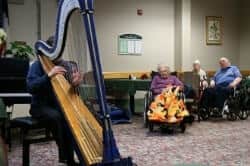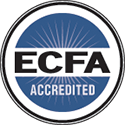The Arts in Health Care

By Dick Grillo
Pablo Picasso said, “The purpose of art is washing the dust of daily life off our souls.” No matter a person’s physical, mental, emotion or spiritual state, some form of art is going to appeal to them, whether it’s music, drama, dance or a painting, sculpture or quilting. And sometimes, when that “dust” is cancer, depression or Alzheimer’s disease, art can be a soothing ointment.
Dealing compassionately and lovingly with the whole person — body, mind and spirit — calls for caregivers to utilize all the resources available to them. Unfortunately, the arts are underutilized in most health care settings. While interior designers do suggest calming paint colors and encouraging murals in children’s wings, the use of other forms of art is almost nonexistent. What caregivers often don’t understand is art’s potential for healing, understanding, and genuine exchange between people.
According to the National Endowment for the Arts (NEA), many studies have been conducted through the years on art’s effects in health care situations. For instance, 33 premature infants in an intensive care unit were exposed to four days of lullabies. These infants were carefully compared with 33 infants in the same unit who did not experience the music. The 33 infants who listened to the lullabies left the unit nearly three days sooner than their counterparts in the control group.
Music is not the only art form with healing benefits, according to the NEA. Studies have shown that directed visual arts activities can play a role in the behavior of children with disabilities. Adolescent illnesses, anxiety, childhood illnesses, eating disorders, mood disorders, neuroses, personality disorders, physical and sexual abuse, schizophrenia, somatic disorders, substance abuse, and traumatic brain injury have been found to be eased with dance.
The goal of arts in health care is to compassionately, lovingly and carefully utilize every form of art — singing, poetry, writing, clowning, puppetry, pottery, laughter, and other creative endeavors — as tools for healing. Arts in health care provide many benefits:
- Enhancing creativity which can lead to a greater sense of well-being.
- Increasing self-esteem which can help with emotional issues.
- Enhancing socialization between patients, families and staff.
- Creating a diversion that can focus a patient’s attention away from a situation that may be out of his/her control.
- Creating a sense of purpose and accomplishment.
- Facilitating the discovery of a new talent or reintroducing a past talent.
- Encouraging patients to stay engaged in life.
Research shows that the arts have potential, not only to prolong quality of life, but for actual healing. ICU patients recover significantly sooner if they have a view of natural beauty. Teach journal writing to someone suffering with chronic illness and he/she will find less need for drugs. Reawaken the instinct to sing or dance and our elders will live longer and happier lives.
Utilization of art in long-term care can benefit people in many ways, such as increased socialization, communication and instruction. Music especially has been proven to make a difference in the well-being of people in various long-term care settings as it can impact the areas of our life that affect body, mind and spirit. It can reduce the need for medication for pain and help improve rest.
The arts in health care does, in fact, enhance the quality of life, not only for the patient, but also — and perhaps as importantly — for family members and the support staff. This is true for people who are dealing with Alzheimer’s and other dementias.
Support staff observes that patients’ attention spans increase when music and song are used during activities and therapies. Patients also show improvement in expressive language, which often comes about through familiar songs and group singing. People in care settings, such as this, increase in short- and long-term memory as shown by their ability to learn and recall words in songs. When using song themes, patients can relate to past life experiences. The use of songs from childhood — or any of the developmental stages of life, including those years of raising a family — sometimes enables the patient to have successful communication with others — especially family members.
It has been said that the arts are a basic ingredient to society and humanity. We are actually healthier for having participated in art making. It is no wonder that the arts have such healing power. It is when we are in the act of creating that we are embodying one of God’s attributes, as ultimately He is the creator of all.
About the author: Dick Grillo, Senior Director of Community and Church Outreach, has been employed at Advent Christian Village for 35 years. He is an accomplished, multi-talented musician who freely uses his talents to enrich the lives of those around him. He coordinates the Live! at Dowling Park Artist Series and numerous other art and musical programs for ACV. Since 2002, he has led a weekly music program for about 25 developmentally disabled adults served by The Arc North Florida in Live Oak.



